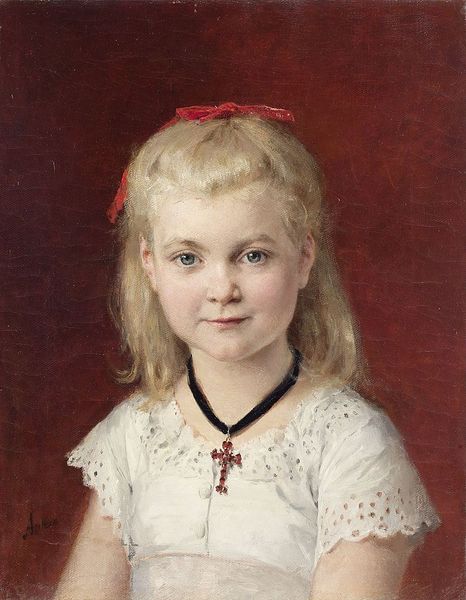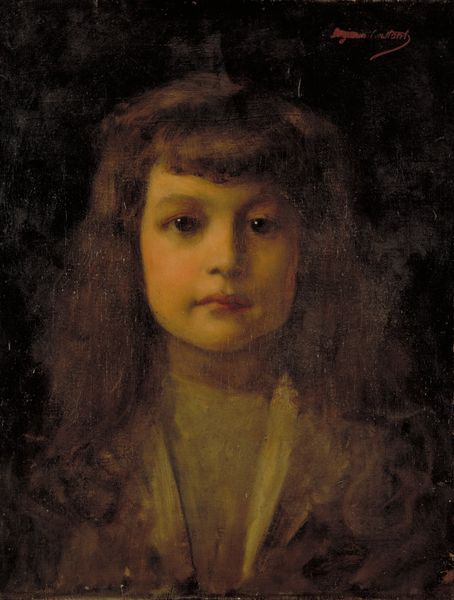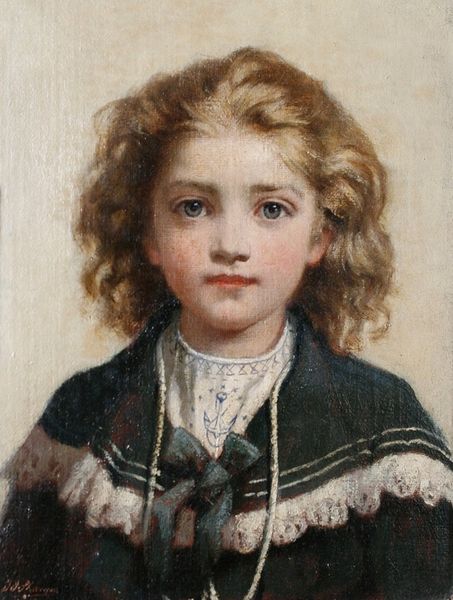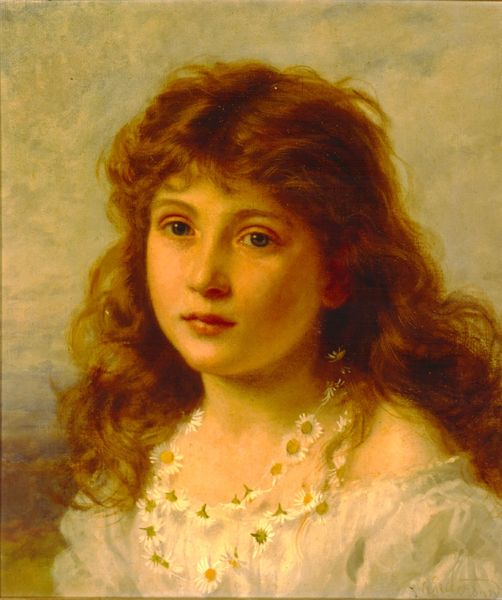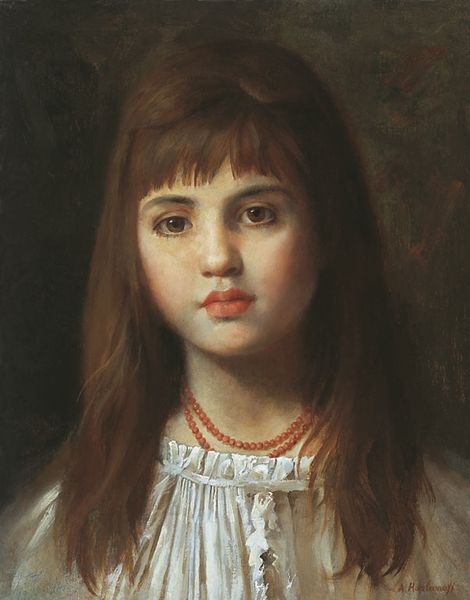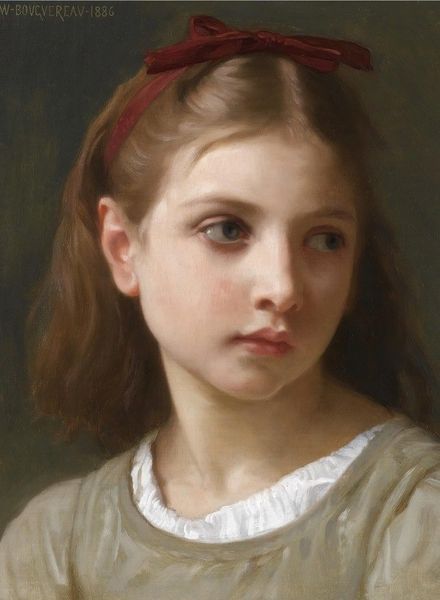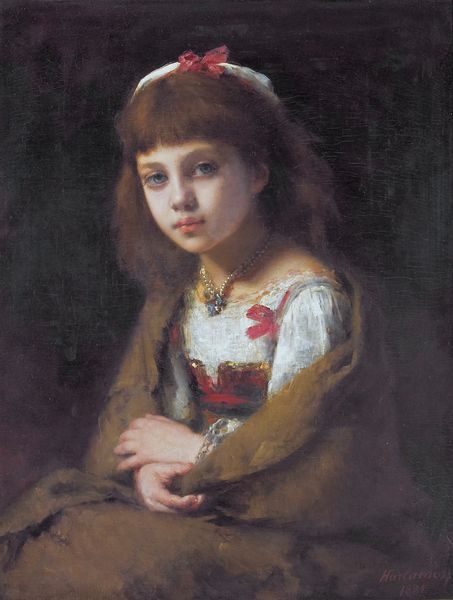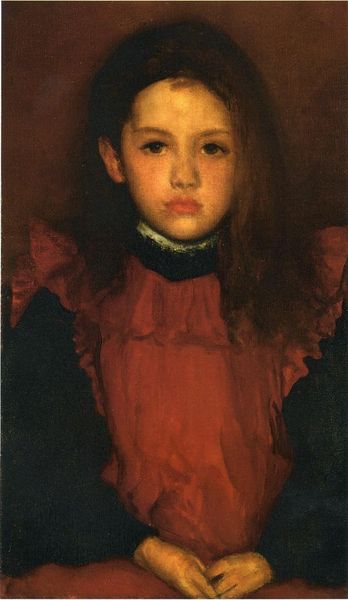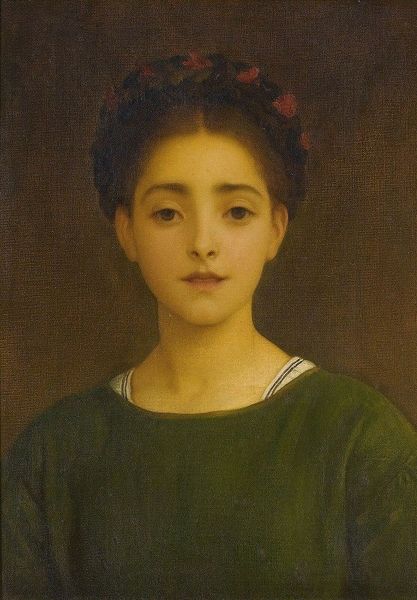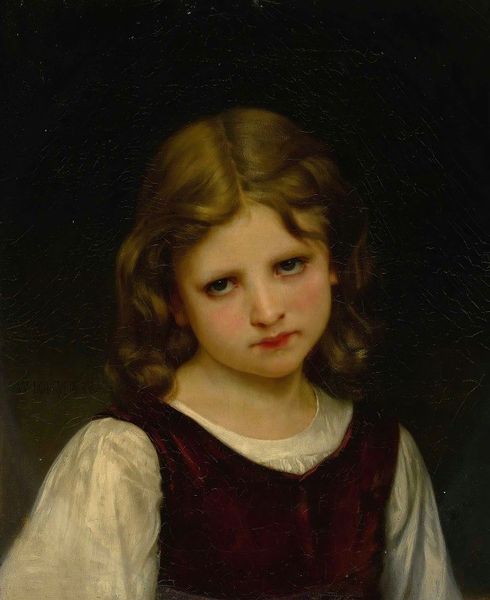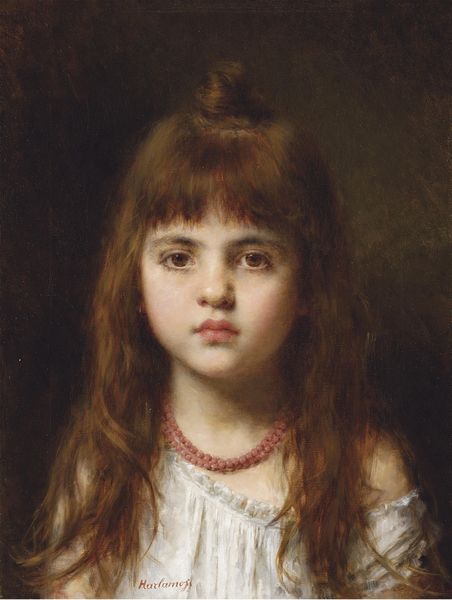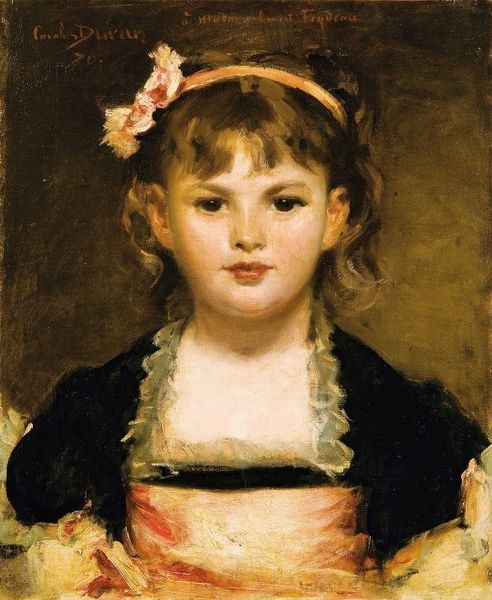
painting, oil-paint
#
portrait
#
portrait
#
painting
#
oil-paint
#
figuration
#
academic-art
#
realism
Copyright: Public domain
Curator: "Petite fille en robe rouge," or "Little Girl in a Red Dress" is the title given to this oil painting attributed to Jean Benner. It is a striking and evocative portrait. Editor: Evocative, certainly. My first thought was that the saturation, the almost jewel-like quality of that red dress, gives the piece an unexpected intensity for what appears to be a fairly straightforward portrait. Curator: Yes, the red is quite powerful. In many cultures, red is associated with vitality, blood, life force itself, as well as passion and strong emotions. Consider how such a seemingly simple choice elevates what would otherwise be a standard portrait into a symbolic meditation on youth and innocence charged with energy. Editor: I am really drawn to the brushwork, too. You can clearly see how Benner layered the oil paints to achieve that luminous effect, particularly in the dress, where the fabric appears almost textured. Was this layering technique common for academic portraits like this? Curator: Indeed. It shows the artist's technical mastery but I also suggest we look at the girl’s face. Note the contrasting dark background pushing forward her features; consider also that the source of light is difficult to locate. These characteristics certainly grant the child a certain spiritual aura that is both delicate and powerful. Editor: It does add to that sense of poised solemnity you see so often in portraits of children of this period. I wonder about the dress itself. I am also struck by how the precise folds and tiny lace collar hint at a certain socio-economic background for both sitter and artist. How would that impact readings of a piece like this, compared to something featuring more everyday clothes or accessories? Curator: Clothing, indeed any signifier of social status in a portrait, impacts reception. Here the attire frames how we are meant to see her; she’s presented with an aura of belonging and societal respect. The details become more charged, turning what is meant to be an innocent child’s portrayal into a formal proclamation. Editor: So, while I appreciate the symbolism and formal staging, I find myself admiring the materiality, the skill in rendering fabric and the clear markers of class present. Curator: And I’m taking away this charged impression about vitality and fragility. It is an insightful reminder to approach even what seems a classic genre with a sense of curiosity about social history and cultural symbolism.
Comments
No comments
Be the first to comment and join the conversation on the ultimate creative platform.
